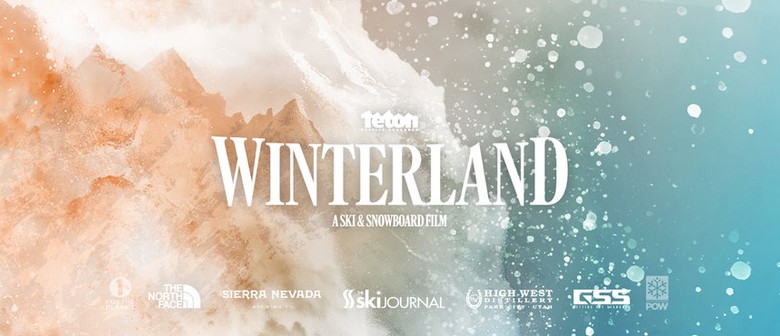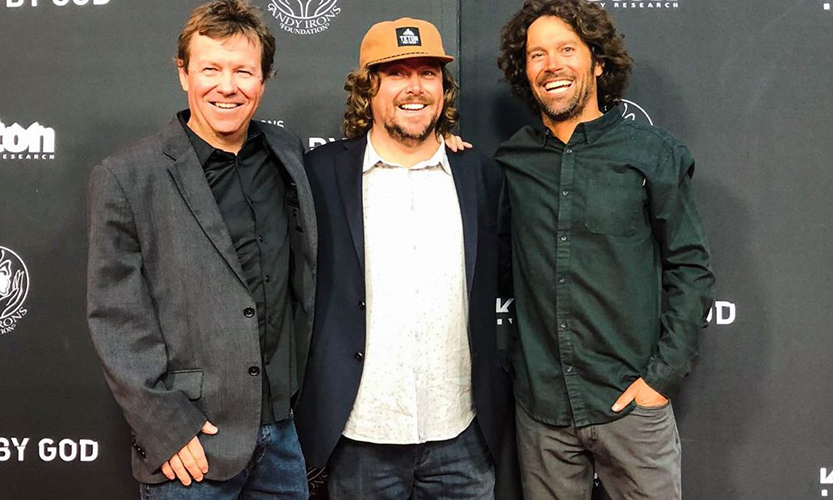

I think the evolution was amazing in that sense. I like that this core of diehard ski bums helped drive the industry into a much funner space. We were walking into tradeshows at the beginning and it was still suits and ties and the corporate world, and the whole thing was kind of stale. It’s interesting to me that we were all coming of age when all of these changes were starting to occur-like fat skis, the talent of Doug Coombs and Shane McConkey, and the whole Jackson movement. Speaking of documentaries, you guys helped document a sea change in freeriding. It signals the gathering of the tribe that you don’t see when the lifts stop spinning in the spring. The film tour we bring around the world is the kick off to the fact that winter’s coming. We’ve done a lot of documentaries and one-off projects, but we love what this stands for. The annual TGR film is part of our roots. It sucks to have a tribute, but I’m happy to be able to honor him.

It’s a fun tribute and you can feel a lot of his personality and see some of the stuff he’s done for us over the years. Even though I’m a little older, he and I kind of grew up together, and were super good friends. We do have a tribute to Erik Roner (who died in a skydiving accident in September of 2015). How do you present Erik Roner in the film? The ski world lost a superstar, and a close friend of yours last year. When it’s foot-powered, you might get one good shoot in the morning and one in the afternoon. Say you have four athletes with a helicopter in Alaska, on a good morning you might get 16 shots you can use. You might fly a 100 miles in a day ticking off good peaks. When you have a heli you can get so much done in a day. When you’re doing heli, you get this routine of finding the zone, seeing when it gets good light, and good snowpack. It’s incredibly more difficult to get the shots for the movie. How does ‘foot-powered’ vs ‘heli’ change how you shoot? He really wanted to do something foot powered, and wanted to go to this zone in the Tod’s that we had been looking at forever. Ian Macintosh led a foot-powered trip into the Todrillos (in Alaska) with Griffin Post to a place we wanted to ride 10 years ago. We have incredible stuff with (big mountain snowboarder) Lucas Debari shredding in pillow land. We were in India, in BC, and had couple different trips to Alaska, and had really good luck wherever we went. You mix that with anecdotes and travel and some of the zany shit that has gone on, and I think you get an overall picture of what TGR is all about.Īs far as the riding goes, we had a really good year.

We’re still having so much fun in the field and our crew is such a tight knit group of people. We just wanted to have a little bit of celebration of TGR and roots, and include a few of these kind of wild unseen moments. This is a modern film following all the current athletes around the world. But it’s not an archival look back into the history of TGR. ‘Tight Loose’ is a phrase we’ve used for years. There is some reference to the genesis of TGR. So is the film a mix of fresh clips and nostalgia? At the root of it, we’re all running everything really tight so the athletes can just drop in and shred and get loose and go wild.

It’s about all of the incredible prep we put into making sure everyone is as safe as possible when we’re shooting, along with our annual safety program and researching lines before we shoot, so that everyone can be loose when it’s time to go. We’ve been having a lot of fun with that too, mixing in some memories with all of the new stuff and bringing in some of the athletes we’ve been privileged to work with over the years. Why make such a big deal about TGR’s 21st birthday?īecause that’s the birthday everyone remembers.


 0 kommentar(er)
0 kommentar(er)
